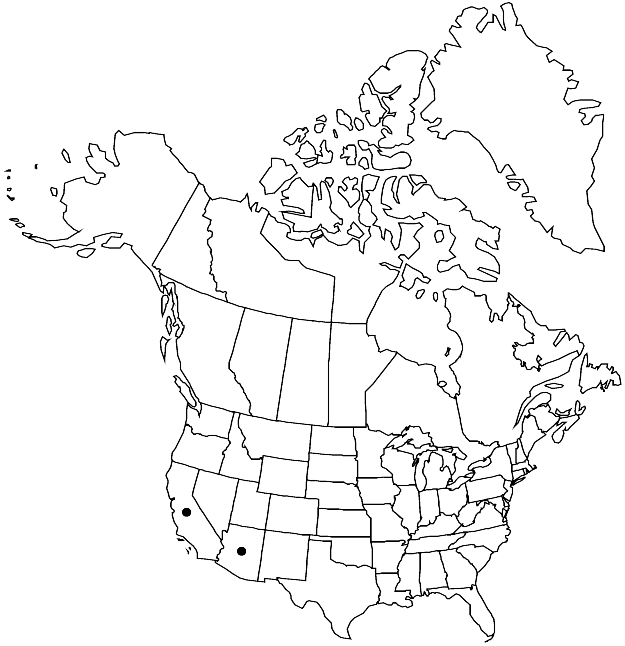Difference between revisions of "Wislizenia palmeri"
Proc. Amer. Acad. Arts 8: 622. 1873.
FNA>Volume Importer |
FNA>Volume Importer |
(No difference)
| |
Revision as of 20:21, 24 September 2019
Subshrubs or shrubs, 50–200 cm. Stems glabrous or glabrate. Leaves: petiole 0.1–2.1 cm; leaflets 3 proximally, 1 distally, gray-green to green, blade ovate to obovate, 0.6–4 × 0.4–2 cm, 3–8(–12) times as long as wide, margins entire, apex emarginate to rounded. Racemes 1–1.5 cm (2–3 cm in fruit). Flowers: sepals green, ovate, 0.5–1.7 × 0.4–1.1 mm, less than 1.75 times as long as wide, margins entire, glabrous; petals yellow, oblong, 2.5–6.3 × 1–2.5 mm; stamens yellow, 4–10 mm; anthers (1–)1.5–2.5 mm; gynophore 5 mm in fruit, usually longer than pedicel. Schizocarps 1–5.6 × 1 mm. Seeds 0.5 × 0.3 mm. 2n = 40.
Phenology: Flowering and fruiting year-round.
Habitat: Sandy washes, coastal dunes, saline flats, desert scrub
Elevation: 100-500 m
Distribution

Ariz., Calif., Mexico (Baja California, Baja California Sur, Sonora).
Discussion
Essentially a Mexican species, Wislizenia palmeri occurs in the flora area in Riverside and San Diego counties in California, and in Organ Pipe National Monument in southern Arizona.
Selected References
None.